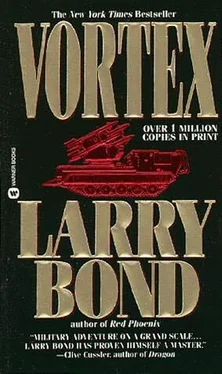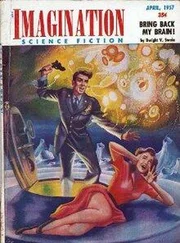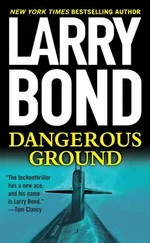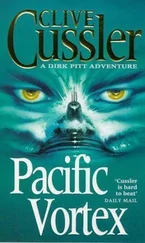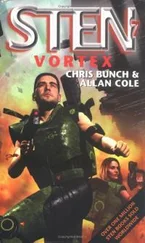“Confirm violet,” replied O’Connell.
“Coming in.”
O’Connell turned to face his men crowding the corridor.
“The gunships are coming in now! Get ready to move and move fast! “
Two AH-64 Apaches popped over the trees at the far end of the Union
Buildings’ botanical gardens. Both vanished in brief clouds of smoke and flame as they ripple-fired salvos of 2.75-inch rockets into the Afrikaner troops holding the gardens. Explosions rocked the whole area-shredding plants, trees, and men alike. A stuttering, buzz saw-like roar signaled that the two gunships were also firing their belly mounted 30mm chain guns-each pouring more than six hundred rounds a minute into the same area.
Before the smoke even started to drift away, more helicopters were visible-a long line of ten UH-60 Blackhawk troop carriers flaring in to land in the courtyard one at a time.
O’Connell scrambled upright.
“Kruger! Pryce! First ten! Move ‘em! “
Five Rangers and SAS troopers dragged and shoved five bound prisoners-Vorster and de Wet among them-out the door and hauled them up into the first waiting helicopter. The Blackhawk lifted off immediately, going nose down to pick up speed as soon as their gear cleared the ground.
Like clockwork, the second troop carrier came in. More prisoners and troops ran out and loaded aboard as it waited, rotors howling through the air.
Load after load. Chopper after chopper. By the fifth or sixth, those
Afrikaner security troops who’d survived inside the Union Buildings were beginning to take potshots at the groups of
American or British troops racing for safety. Men who’d almost made it home were being killed or wounded. Not many, but some.
O’Connell watched in anguish. There wasn’t anything he could do. They couldn’t use the gunships without killing many of the hundreds, maybe even thousands, of civilians who were pinned down in their offices inside the government complex. There were snipers in only a very few of those offices. And rockets and chain guns didn’t offer the kind of pinpoint accuracy needed to deal with the bastards.
“Colonel! This is it! Last bird!” Pryce shouted in his ear and pointed behind them. Except for the last eight Rangers and SAS troops, the corridor was empty.
“Right.” O’Connell rose and moved to the door. He gripped his assault rifle hard. Any second now.
The last Blackhawk came in low and flared out just meters from the doorway.
Now! O’Connell and his men raced outside, bent over low to stay beneath turning rotors. He saw a flash just ahead of him as a bullet slammed into the pavement and ricocheted away. Damn it!
The man running in front of him suddenly grunted and collapsed. O’Connell and Pryce each took an arm, hauled the wounded man to his feet, and then half-dragged, half-carried him over to the waiting helicopter. Crewmen in flak vests and goggled helmets helped them aboard.
The Blackhawk surged off the ground and raced ahead, skimming Pretoria’s rooftops as it flew south.
MINISTRY OF DEFENSE, PRETORIA
Brig. Deneys Coetzee stared out his window, watching the tiny black specks carrying Kruger, the Allied commando force, and Karl Vorster vanish in the distance. My God, it bloody well worked, he thought, seeing the last traces of dirty-gray smoke drifting away from the Union Buildings.
He swiveled round in his chair and picked up the phone.
“Colonel Doome, this is Coetzee. They did it. Execute Plan Valkyrie immediately. Yes, that’s right. Immediately.”
He hung up and went back to the window. Within an hour, soldiers commanded by officers heartily sick and tired of Vorster’s insane regime would begin fanning out through the capital. Within two hours, most of the AWB’s now-leaderless fanatics and Brandwag party troops would either be dead or in custody. By nightfall, Deneys Coetzee would head the only viable government in what little was left of South Africa’s territory.
And by daybreak on the eleventh, he planned to be deep in hurried negotiations with Lt. Gen. Jerry Craig-trying desperately to save something of his people’s self-respect and sovereignty.
JANUARY 10 - WARM BAD
Night had not brought any relief from the air attacks. The American aircraft could see in the dark better than his men could. In addition to the continuing damage, the aerial pounding was denying his men any sleep, or a chance to recover from the day’s raids.
It was near midnight now. Gen. Antonio Vega had spent the hours since sunset moving from unit to unit, gathering information, issuing orders, and reassuring his troubled men. Veterans of dozens of South African air raids, the men were unready for the volume and strength of the American attacks.
Instead of four Mirages dropping a ton of bombs each, four Intruders would drop four or five times that amount, and they would be preceded by two Hornets armed with anti radiation missiles and cluster bombs. Only after the fighters had worked over his flak and SAM sites would the heavily loaded attack aircraft arrive.
The first raiders had come at dawn and had continued to attack throughout the day. In pairs, fours, and once in an
entire squadron, they had come, and his carefully prepared advance had slowly ground to a halt. Right now he was trying to rally his men and see how they could get moving again.
Vega’s next stop was one of his antiaircraft batteries. In the darkness with just a quarter moon and no headlights, only his driver seemed to know the way, guiding him safely to the spot.
The battery had been deployed on an open patch of ground five hundred meters east of the town. This gave its guns clear arcs of fire and separated them from some of the more obvious targets.
Vega’s approach was unannounced, and he’d actually climbed out of the jeep before a lone sentry came forward, his weapon at port arms. He started to challenge the general, then recognized him and called for the sergeant of the guard. Vega continued to stride toward the guns, returning the sentry I s salute and listening as word of his arrival was passed along.
In less than a minute a stocky, hook-nosed captain came trotting up, still wiping grease from his hands. He stopped a few paces away and saluted.
“Captain Rudolfo Morona, commanding B Battery, ready for your inspection, sir. ” The general noticed an ironic smile creeping onto the captain’s face and fought back the urge to reprimand him for impertinence. It looked as if the man was doing his job.
“What is your status, Captain?”
“Four guns of the six are working, with a fifth under repair. We should have it working in about half an hour. The sixth is total loss.”
“How about the radar?” the general asked.
Morona shook his head.
“Not a chance, sir. ” He gestured with an arm.
“This way please, General. You can see for yourself. “
The two officers approached the radar, located on the edge of the antiaircraft site. The entire battery consisted of six S60 57mm guns, reliable weapons that provided protection against low-and medium-altitude attackers. They were an older design, though, towed by trucks and unarmored. Laid out in an evenly spaced circle, each weapon was connected by a cable to the SON-9 gunfire-control radar, code-named Flap Wheel by
NATO.
The radar was simple enough in appearance. A square sided van, mounted on four wheels, it carried a small parabolic dish on top. Again, it was an older design and had been in service for twenty years.
As they approached the van, Vega could see its shape in the moonlight.
It looked undamaged. As they got closer, though, the general could see that the van’s surface was covered with spots, giving it a mottled appearance. Then, looking up, he saw jagged, irregular holes in the radar dish.
Читать дальше
